Visiting the Combatants of the Morro of Arica Museum
Hello everyone! I hope that you’re all very well, enjoying this Sunday! I hope so! The centre of Lima is a gem, and a place that can take us to many parts of our history, and not only the colonial history as we’re going to see this time. Well this time I want to share one of my experiences of visiting another museum in Lima, this place is known as “The Museum of the Combatants Morro of Arica”.

This museum pays homage to each one of the brave Peruvians who sacrificed their lives in honour of their homeland in a war known as the Pacific War where Peru and Bolivia fought Chile. A war that Peru lost, however despite having lost the war, we have been able to produce brave people inside of our history, like those who we will get to know in this publication, as well as another person (who I’ll talk about tomorrow), I’m referring to officer Miguel Grau, considered to be the Peruvian of the century.
Without further ado, let’s discover each one of these passages through history of the museum and its marvellous atmosphere.
An introduction to this incredible visit
Although it will seem a little funny, I’ll tell you that I came with my bike from North Lima in my parents’ house. My family live in San Martín de Porres so I decided to come via Avenue Nicolas Dueñas, then Avenue Colonial until I arrived at the Plaza Dos de Mayo, which is a round plaza. Then I took the Avenida Emancipación and then the Calle Colmena, where I turned off onto Calle Cailloma where I finally left my bike parked in the Plaza San Agustin, where you will find places to leave your bike because there is a council office that operates there, so it would be difficult for somebody to steal it!
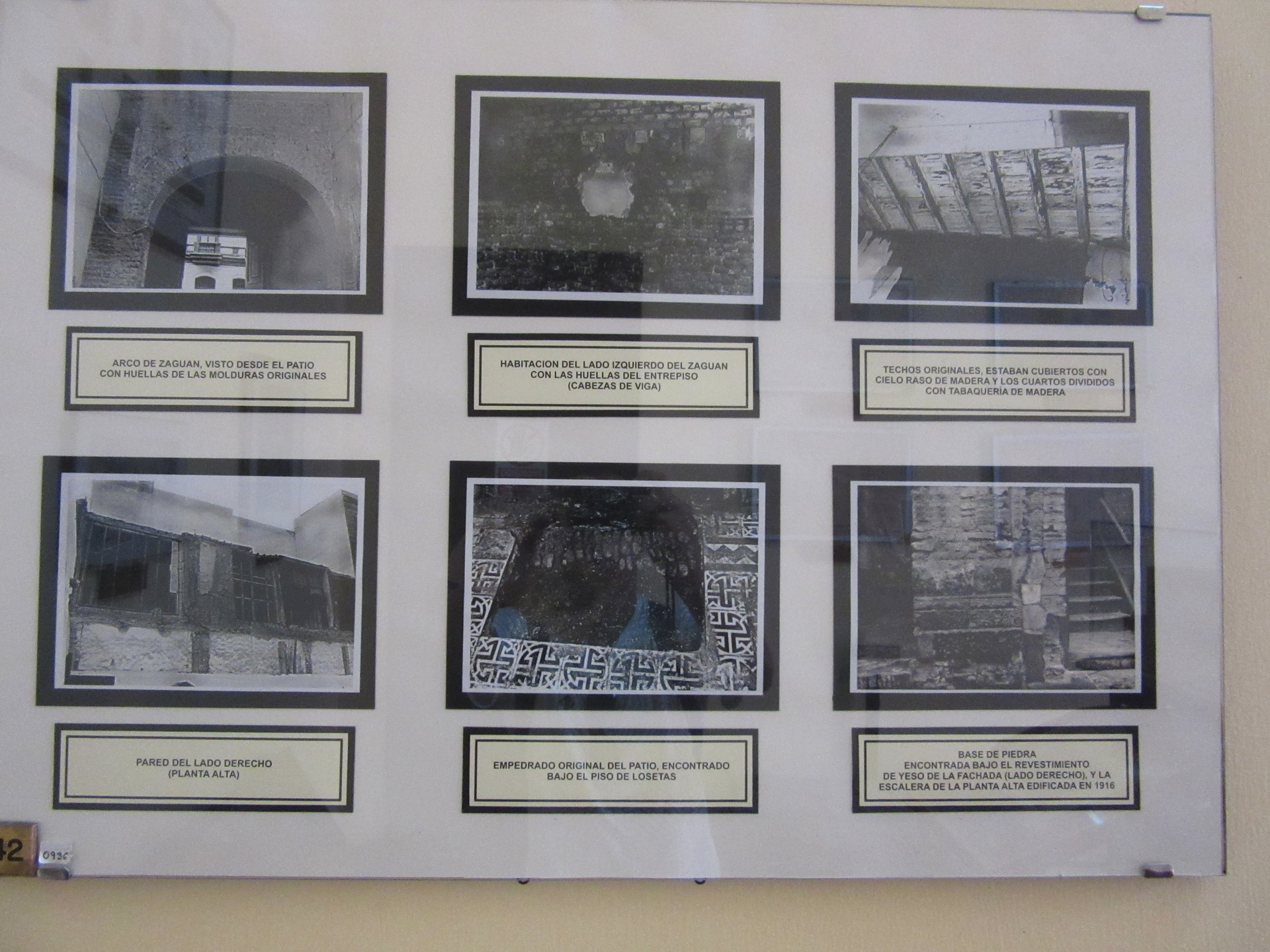
I began to take an interest in this museum when I was studying Tourism Administration at the National University of San Marcos, because I remember a group from my class once telling us about the things that we could find in this museum and it seemed really interesting. I tried on more than one occasion to go there but when I came it was closed, so this time I made sure it was open in order to see for myself all of the stories and the items that can be found here.
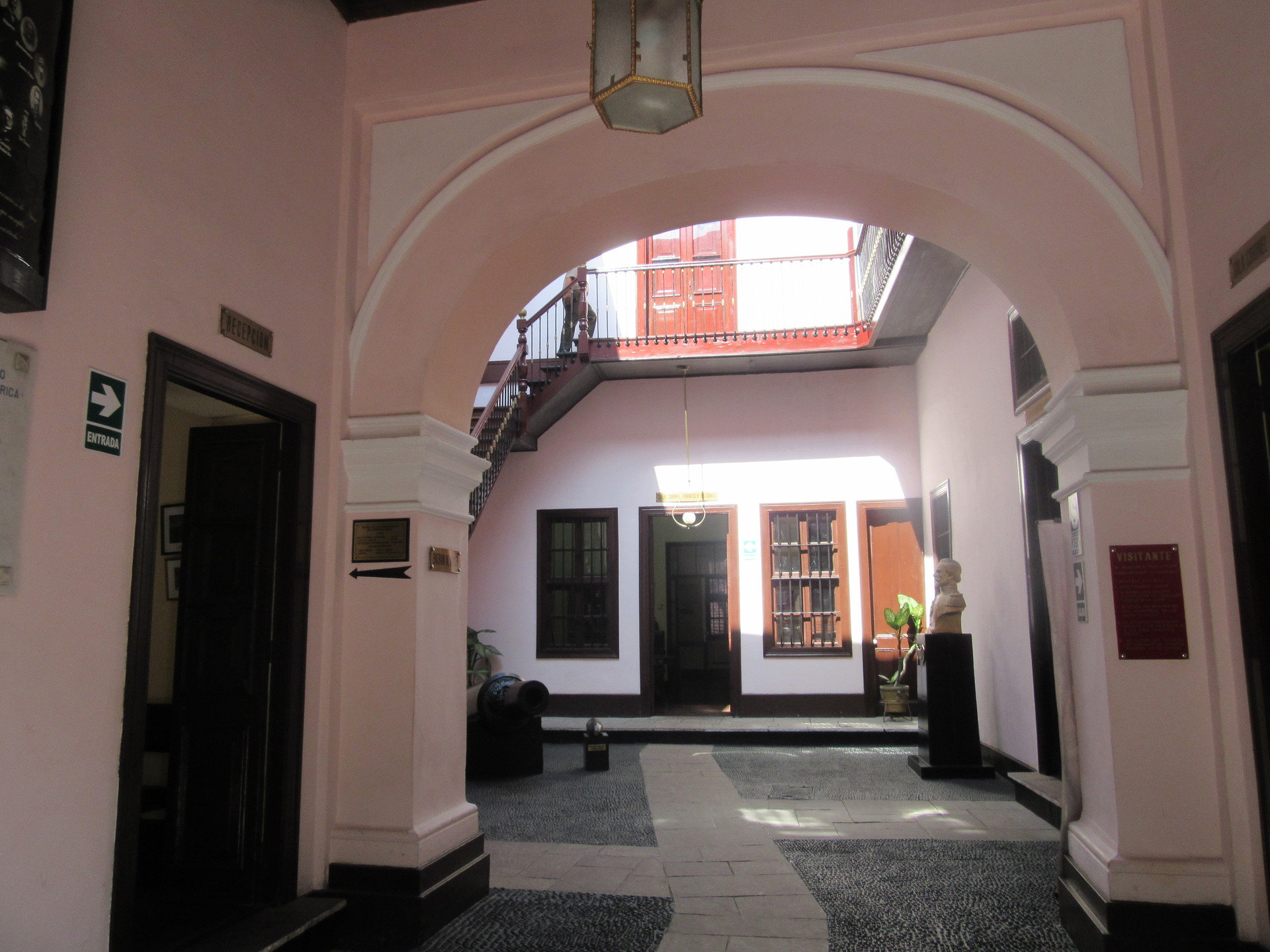
Where is The Museum of the Combatants Morro of Arica?
The museum is in an area quite close to what is known as the Plaza de Armas in Lima, where I suggest you have a look around before or after because you’ll be abl to see some interesting monuments such as the cathedral, the Presidential Palace, the town hall of Lima and the Arzonispal Palace. Really, the centre of Lime has so much to offer that just one day isn’t enough to see it all.
Here I’ll give you the address of the museum so that you can locate it:
Museum address: Jirón Cailloma 125.
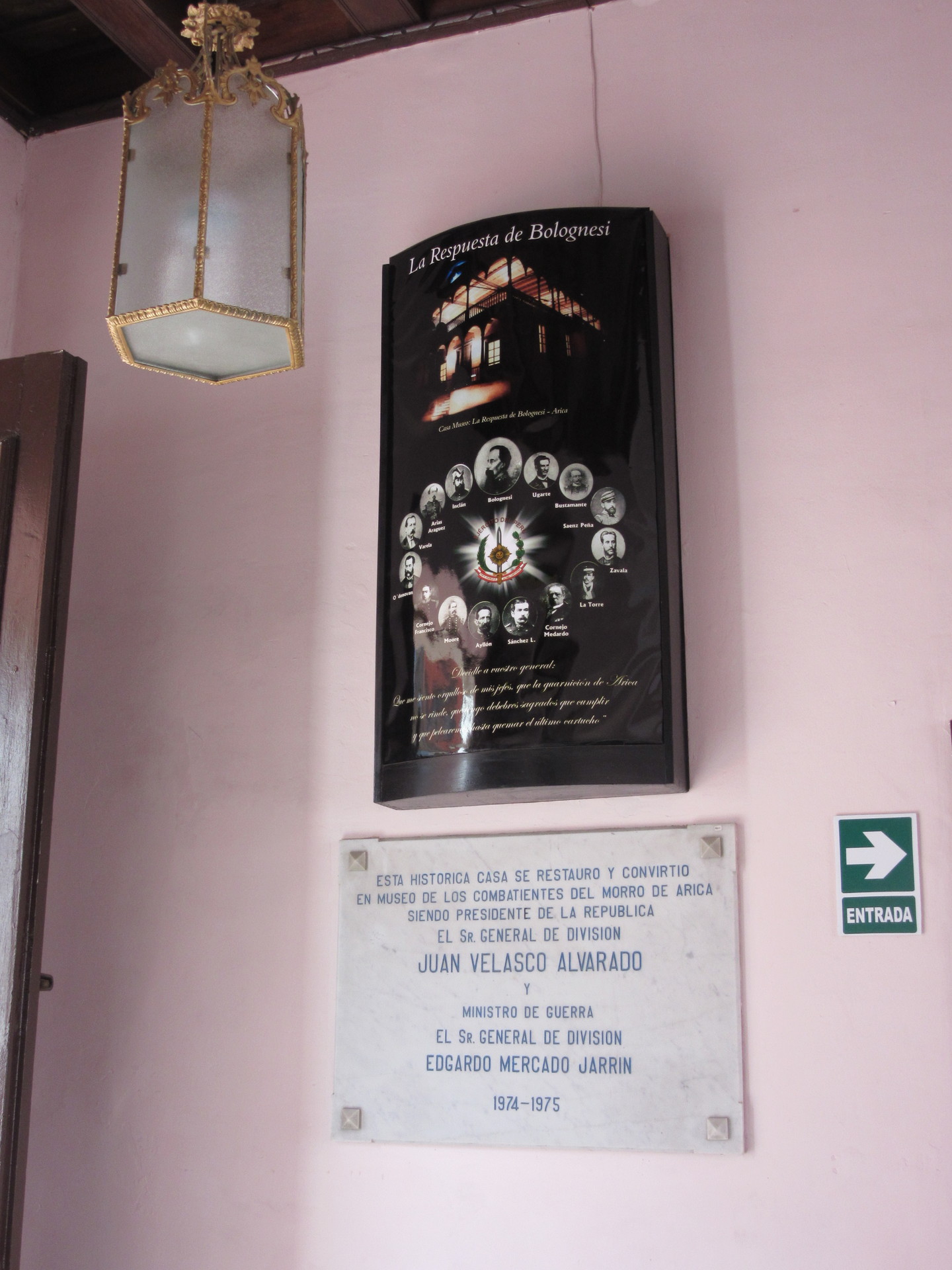
What are the opening hours of the museum?
Here I’ll give you the opening hours of the museum for you to bear in mind when you want to visit:
- Opening hours:
- Monday to Friday from 9:00 am to 3:00 pm
- Satudays from 9:00 am to 1:00 pm
When I first arrived at the museum I met a lady at reception who took good care of me, as well as taking the opportunity to ask me about how to go about studying abroad, since I told her that I was doing a Masters in Tourism in Italy and that this was the first time I’d come to the museum, so we were friends! She gave me my ticket after paying the entry fee and gave me a brief explanation of the route I had to take. She said that first I could look around the first floor on the left, and then go upstairs where I would find more artefacts about the heroes of Arica’s combat.
So that you can locate yourselves, I want to show you in this first photo the outside of the museum. As you can see, the colours that stand out here are yellow and white, it has republican balconies as well as being crowned with a Peruvian flag.
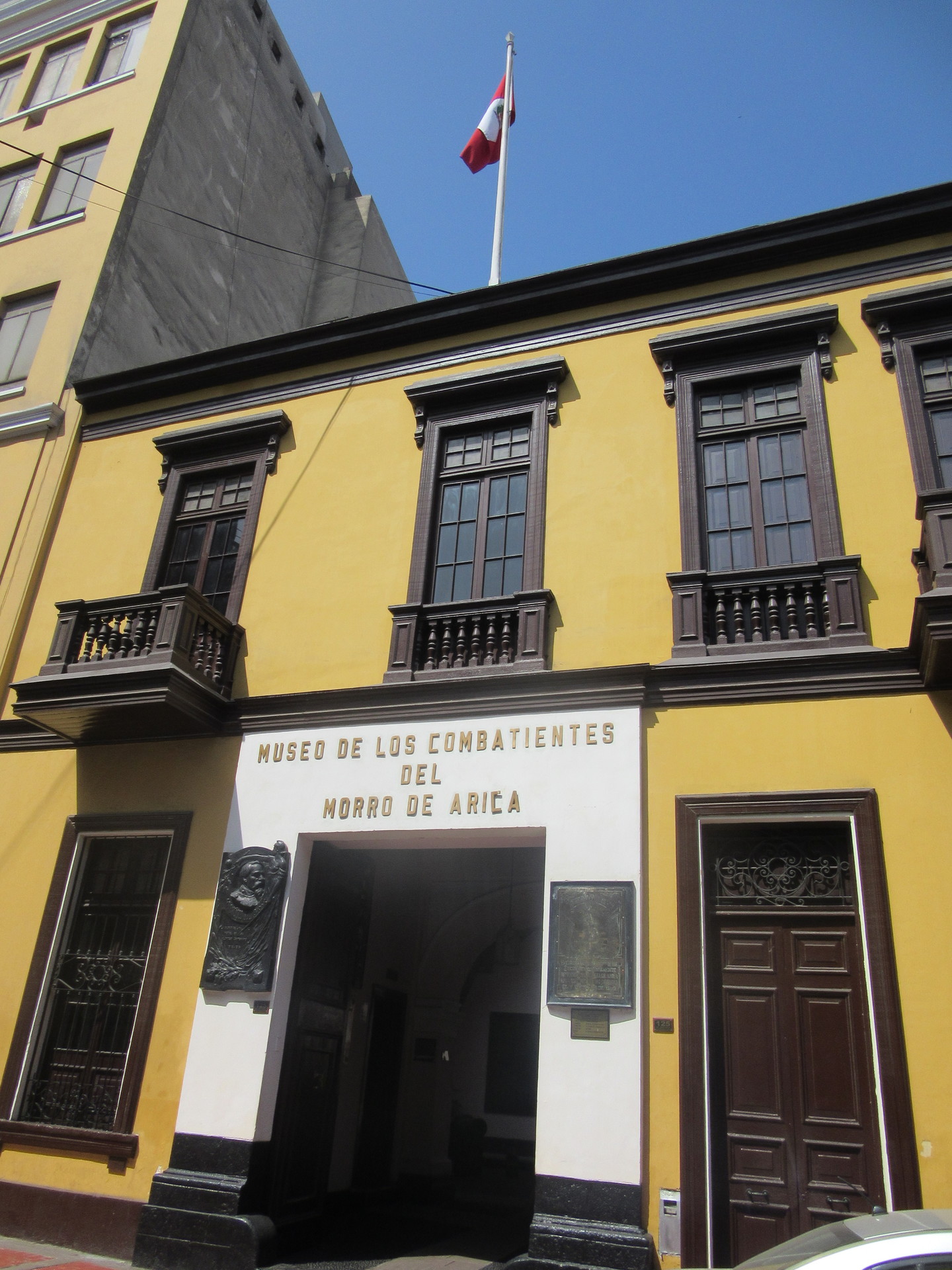
I’ll also take this opportunity to tell you a little about the streets of Lima. As I told you before, the street where the museum currently is is called Jirón Cailloma however it wasn’t always like this. Formerly, the streets of Lima during the colonial period were named after people who had lived in that street, an important event, or a commercial activity that was going to be carried out. In this case, the former name of the street was La Calle de Los Afligidos.
The main character of the museum: Francisco Bolognesi
This museum really does have lots of stories and is linked to all of those who sacrificed their lives in honour of their homeland, amongst them, the one who stands out the most is Francisco Bolognesi, who in these times of war produced the following famous saying for the history of Peru, saying “I have sacred duties to fulfil and I will fulfil them until the last cartridge has been fired”.
Well dear friends, we are going to realise that lots of museums are closely linked to their own architecture. Perhaps you’re wondering, why is this museum located right here? Place your bets! The answer is that this house belonged to Francisco Bolognesi, which is why it was converted into a museum.
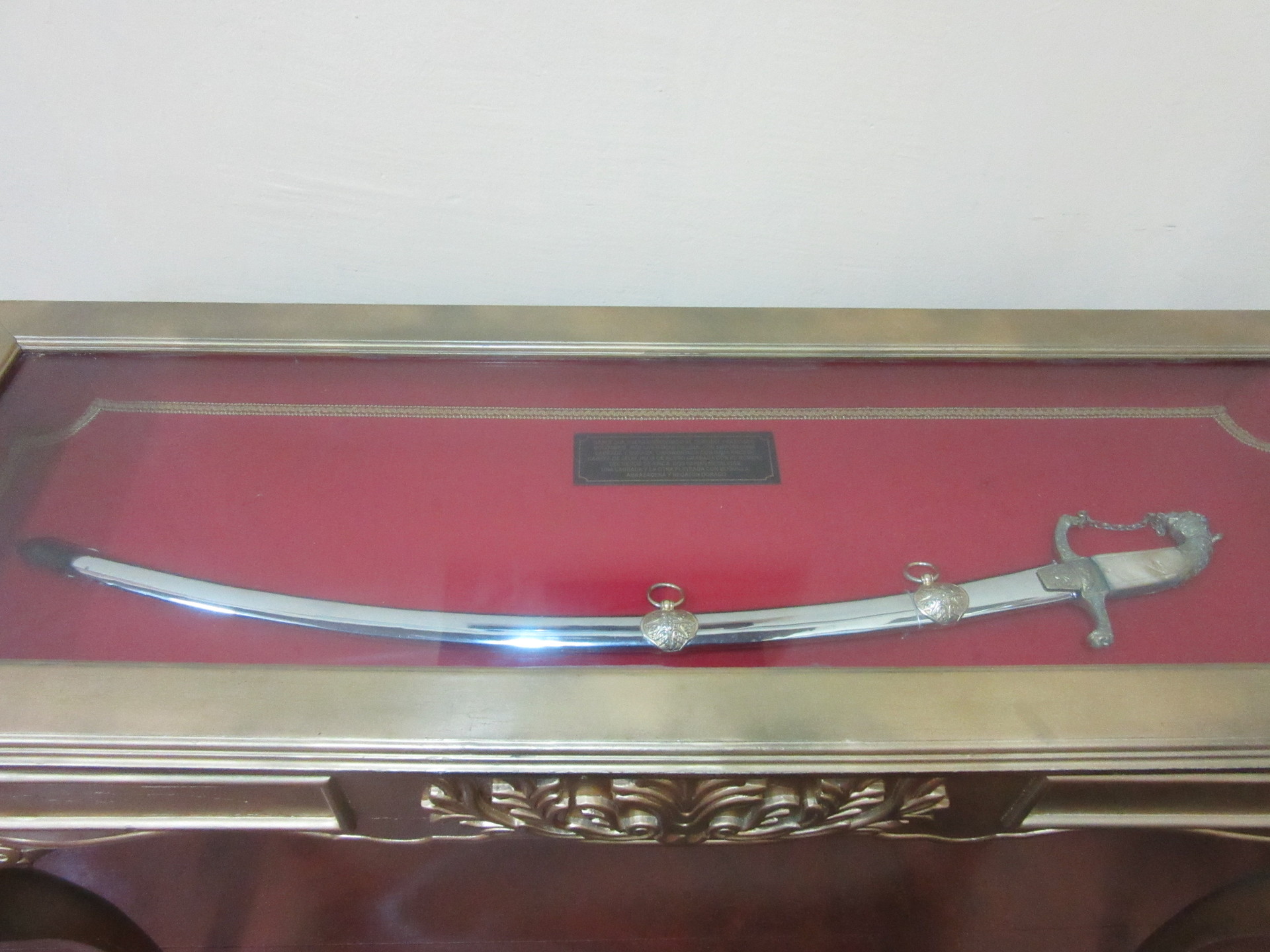
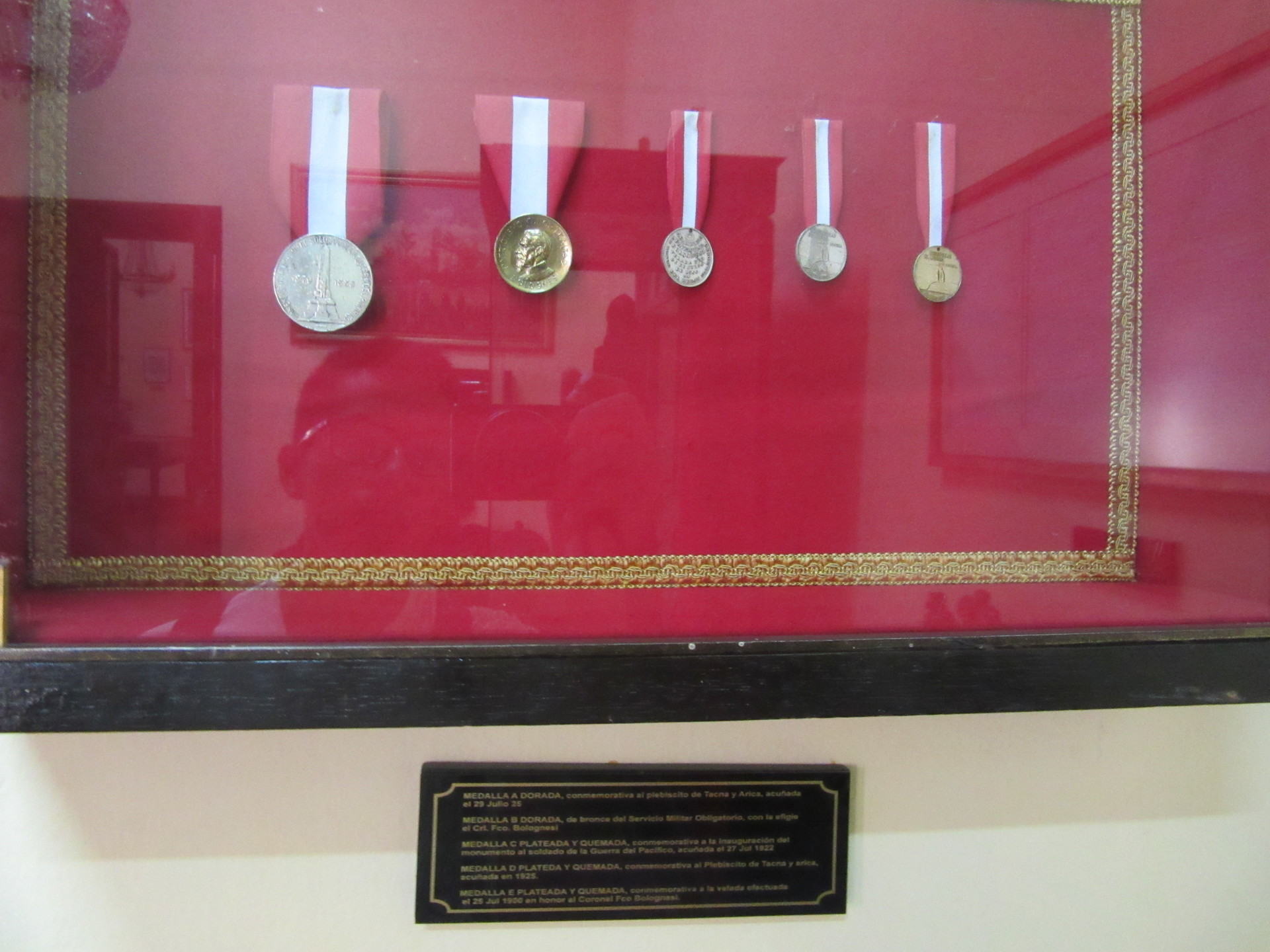
An interesting fact that I can share is that the hero Francisco Bolognesi was baptized in the San Sebastian church, a church that is still standing and where not only he was baptized, but also lots of other characters from Peruvian history. If you want to know more about this little church, click here and it will take you to a link that I made on this same page with an outline of San Sebastian church.
An interesting fact about is existence, or better said, about to be destroyed
I knew about the museum’s location before coming, since it’s located in Jirón Camana and the particularity of this location is that, at one time, they wanted to elongate the Santa Rosa passage which is located in the Plaza de Armas so that it could connect to what is now the Santa Rosa de Lima Sanctuary (the first saint of America). However, this decision or project had to be thrown away because it involved destroying the house of Francisco Bolognesi! Obviously this caused many people to go against the proposal so it was never realised.
A little statue of Francisco Bolognesi
Francisco Bolognesi is a well-known character in Peruvian history. Throughout Peru and in the city of Lima itself there are different sculptures and monuments dedicated to him. In the first room of the museum you will find a small duplicate statue of the one which is now in the Plaza Bolognesi, which is also in the centre of Lima very close to Avenida Alfonso Ugarte and Paseo Colon.
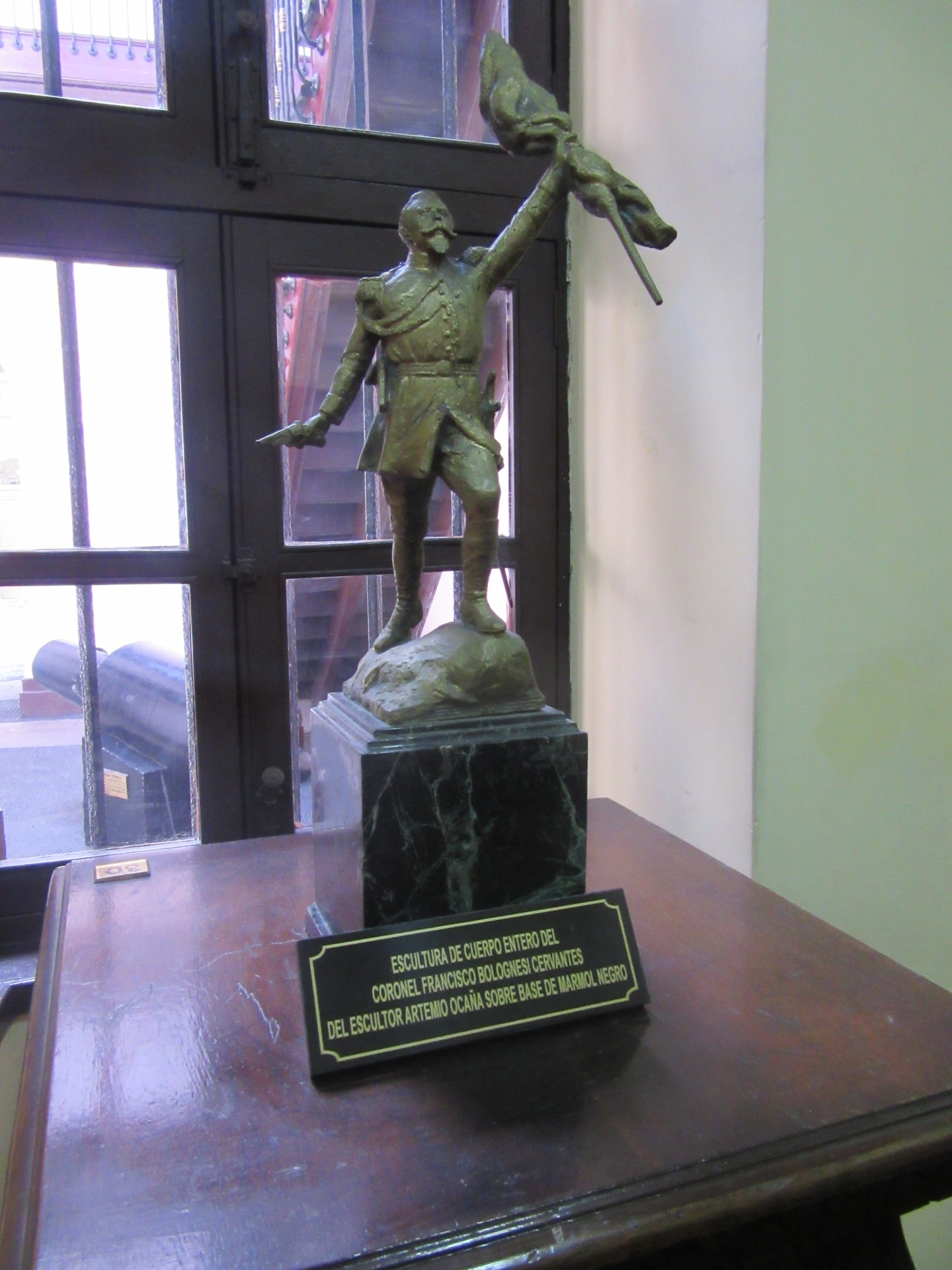
The first room you’ll come to inside the museum is dedicated to the hero of the Battle of Arica, for example, as well as the statue you can find a 19th century revolver used by the hero, as well as a gold medal in honour of his sacrifice.
You’ll also see some relics like his spade. In another section of the museum there are also some frames with accounts of the battle and more about the life of Francisco Bolognesi.
To tell you a bit about the heroe’s biography, I can tell you that in 2016 100 more years since his birth were celebrated. He was born on the 4th December 1816 and died in Arica on the 7 of June 1880.
Despite being a smaller group and having less arms during the Pacific War with Chile, Francisco Bolognesi never surrendered, and even sacrificed his life in honour of the country. Due to his great courage, he is considered Patron of the Peruvian Army as well as having the posthumous rank of Grand Marshal of Peru (a title that was given to him in 1989).
For those who don’t know Francisco Bolognesi, allow me to present you the following photo that I took in the small room where there is a canvas of the hero, Francisco Bolognesi.

Household items
Remember also that I had mentioned that this place was Francisco Bolognesi’s house and therefore you’ll be able to find some items that belong to moments of his existence, like ceramic plates and a cutlery set that were used by the Bolognesi family. Here is another photograph:
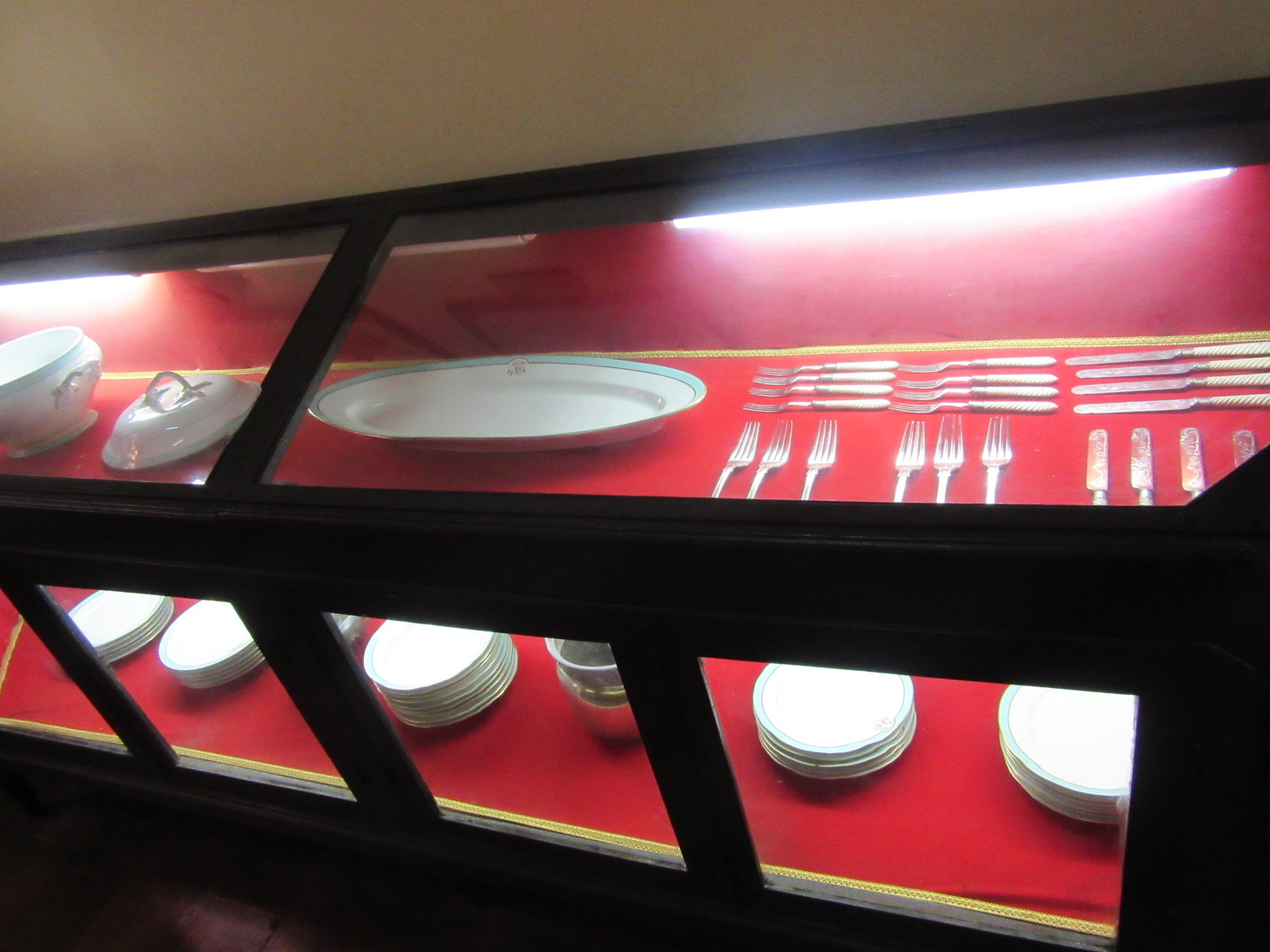
A thought provoking phrase
There’s a phrase inside the museum that I honestly hadn’t read before – that’s what is interesting about discovering museums there is always new information. So in the museum on a wall the following phrase was written: “…Never demand anything, so that they don’t believe my duty had a price.. ” This is a letter from colonel Francisco Bolognesi written for his wife on the 22nd May 1880 from Arica, less than two weeks before he gave his life for his country. What do you think? I admit that reading this type of phrase evokes a lot of feeling and the bravery from Francisco Bolognesi, undoubtedly somebody worth of being considered a national hero of Peru.
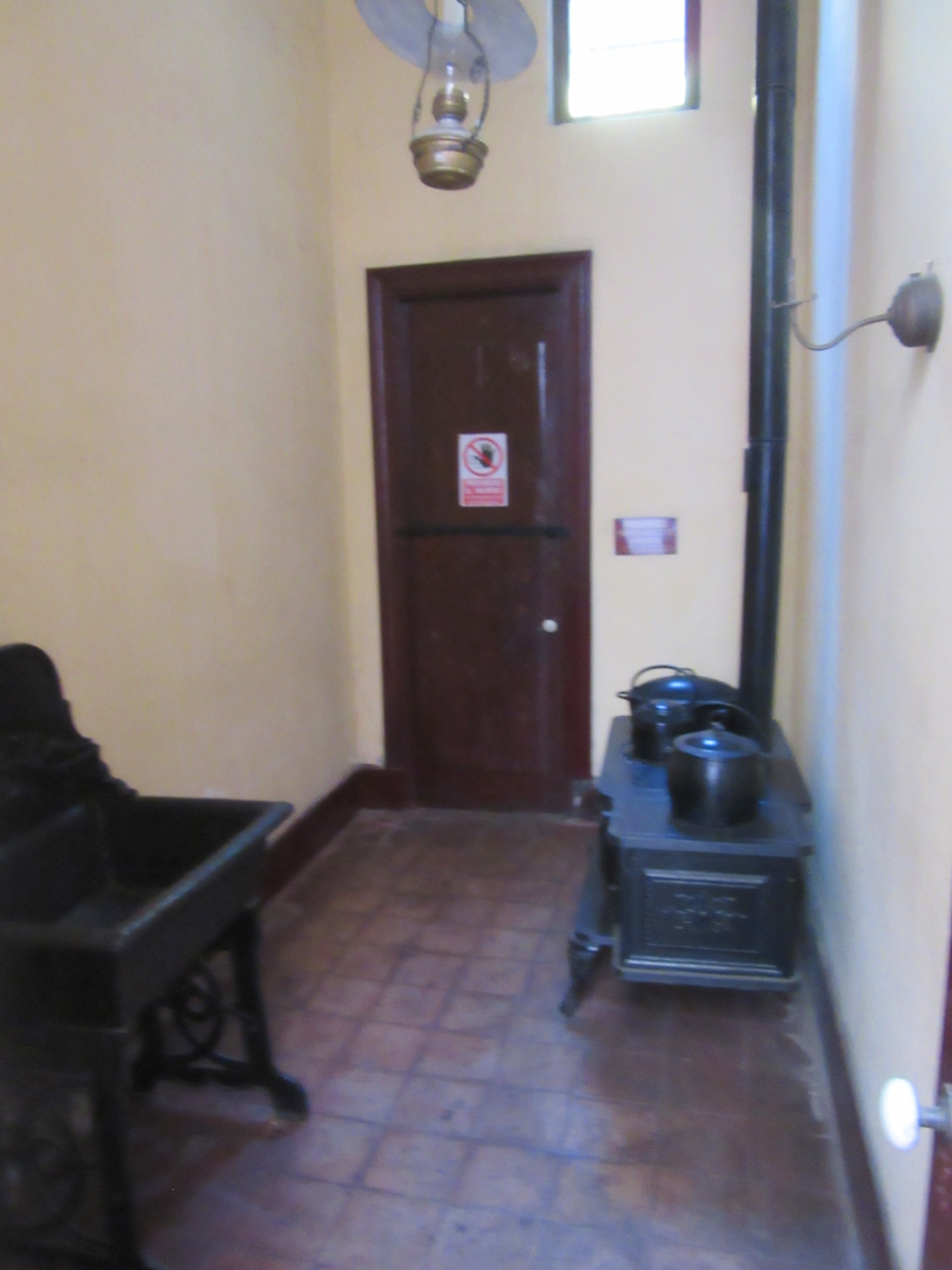
After having been in the first room you’ll find a small passageway that will take you to what was the kitchen of the house. The kitchen is really quite small so the inside can only be seen from the side of the door. Inside there is the original floor as well as some kitchen items such as pans for example that are supported by an old kitchen unit that I must say reminded me of my Grandmother’s kitchens.
Here is another photograph where you can see the pans and the household furniture better:
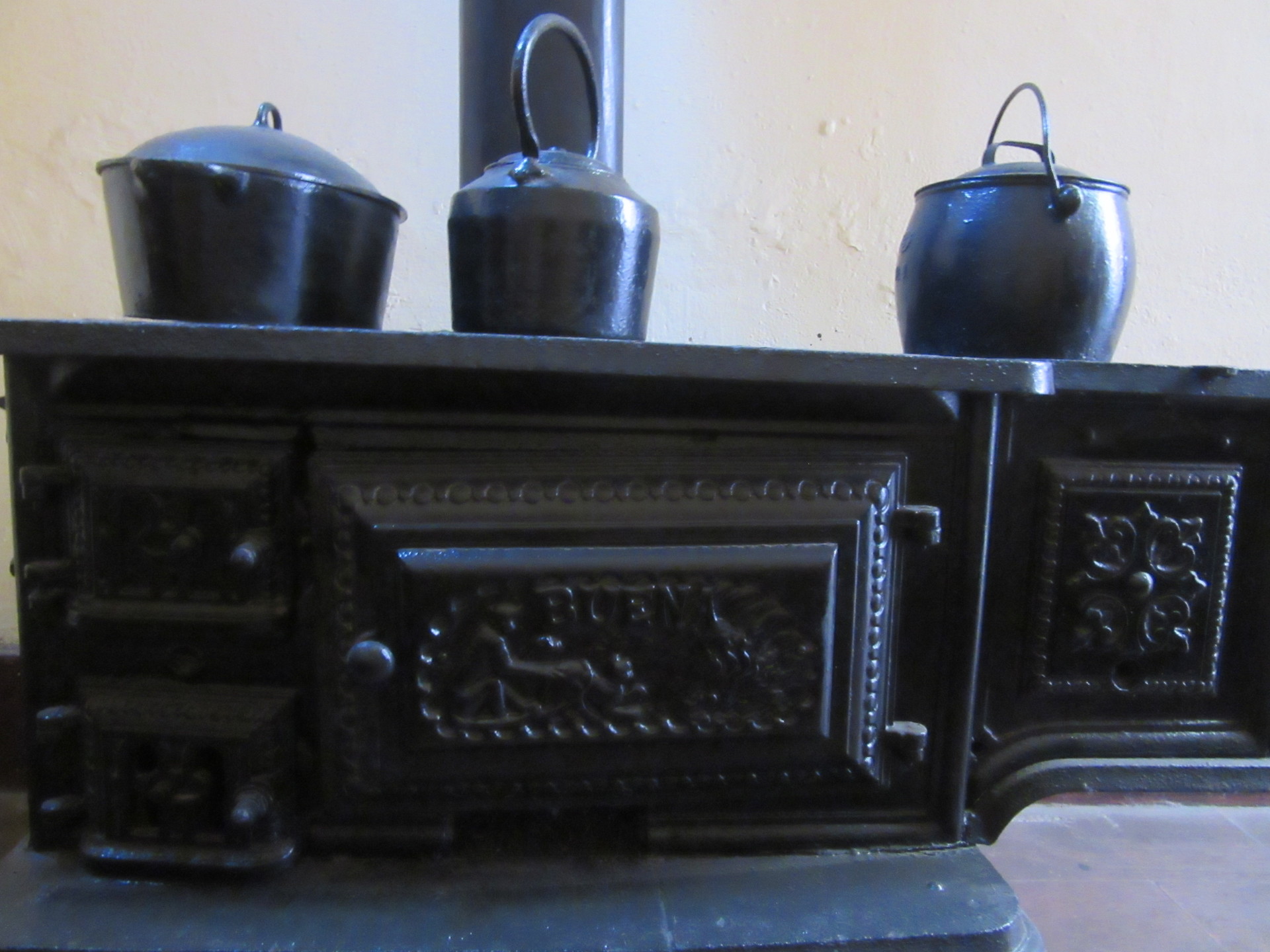
The Alfonso Ugarte room
Another person linked to the Pacific War is Alfonso Ugarte, the one who jumped from his horse on the headland of Arica in order to save the flag of Peru. In the room you will find the uniforms that belonged to him.
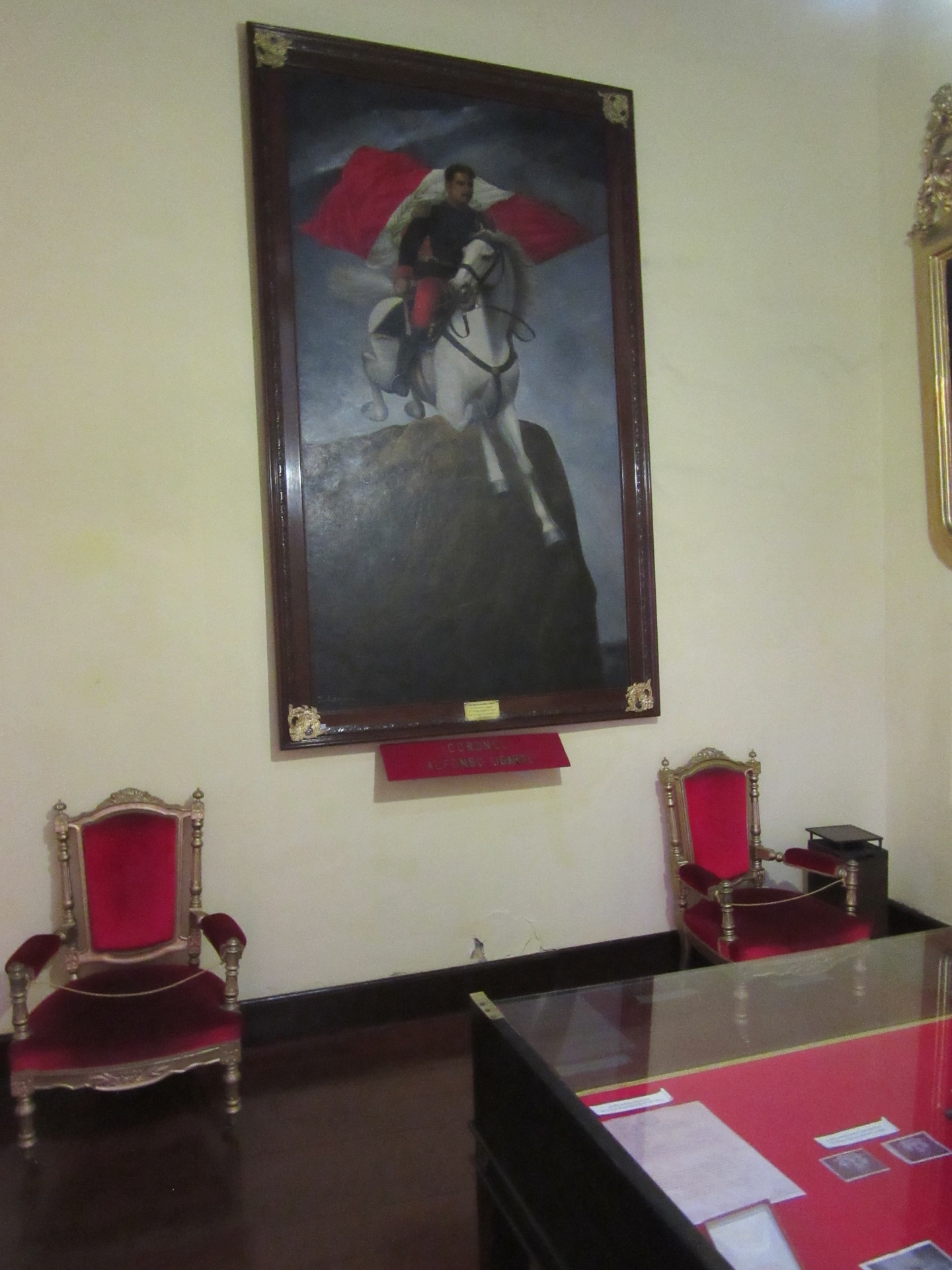
Present day Argentina
There’s another room dedicated to Argentinian people who also participated in the war, so it’s here where you’ll be able to find the flag of Peru and one of Argentina.

On the other hand, there are lots of parts of the house that have started to be restored bit by bit to be able to house each of the relics that are found here.
I’d also like to tell you that there is one of the statues that marked the controversy referring to Francisco Bolognesi since when it was created people thought that the hero looked rather droopy, so they had to remove it and replace it with the current one. The old one is now in the Real Felipe museum which is located in Callao.
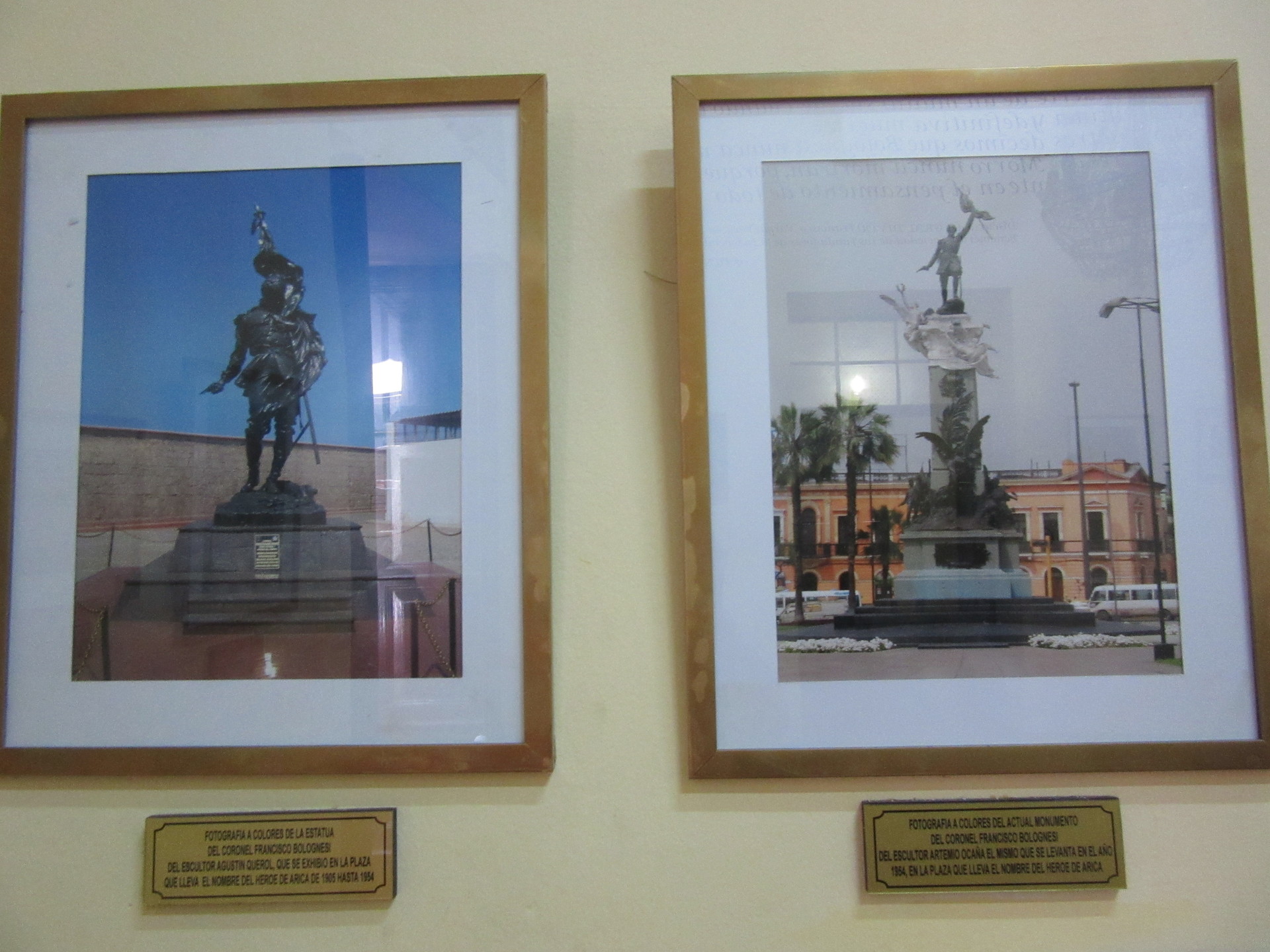
Additionally, now the remains of the militants of the Pacific War are found in the crypt of héroes which is located inside the General Presbítero Matías Maestro Cemetry. In the museum you will find a photograph of that, which by the way I also advise entering the cemetery that was one of the first in Lima and where you can see some very beautiful sculptures, as well as lots of important people in Peruvian history who are buried there. The Beneficencia de Lima run night tours there.
Although the remains of Francisco Bolognesi are in this cemetery, inside the house you will find an urn containing the ashes of heroic militants who found and died on the 7th June 1980. on the Morro de Arica. The urn is small and made of marble and there is also a small electric light that functions like a candle that guards and cares for the ashes of these important historical characters.
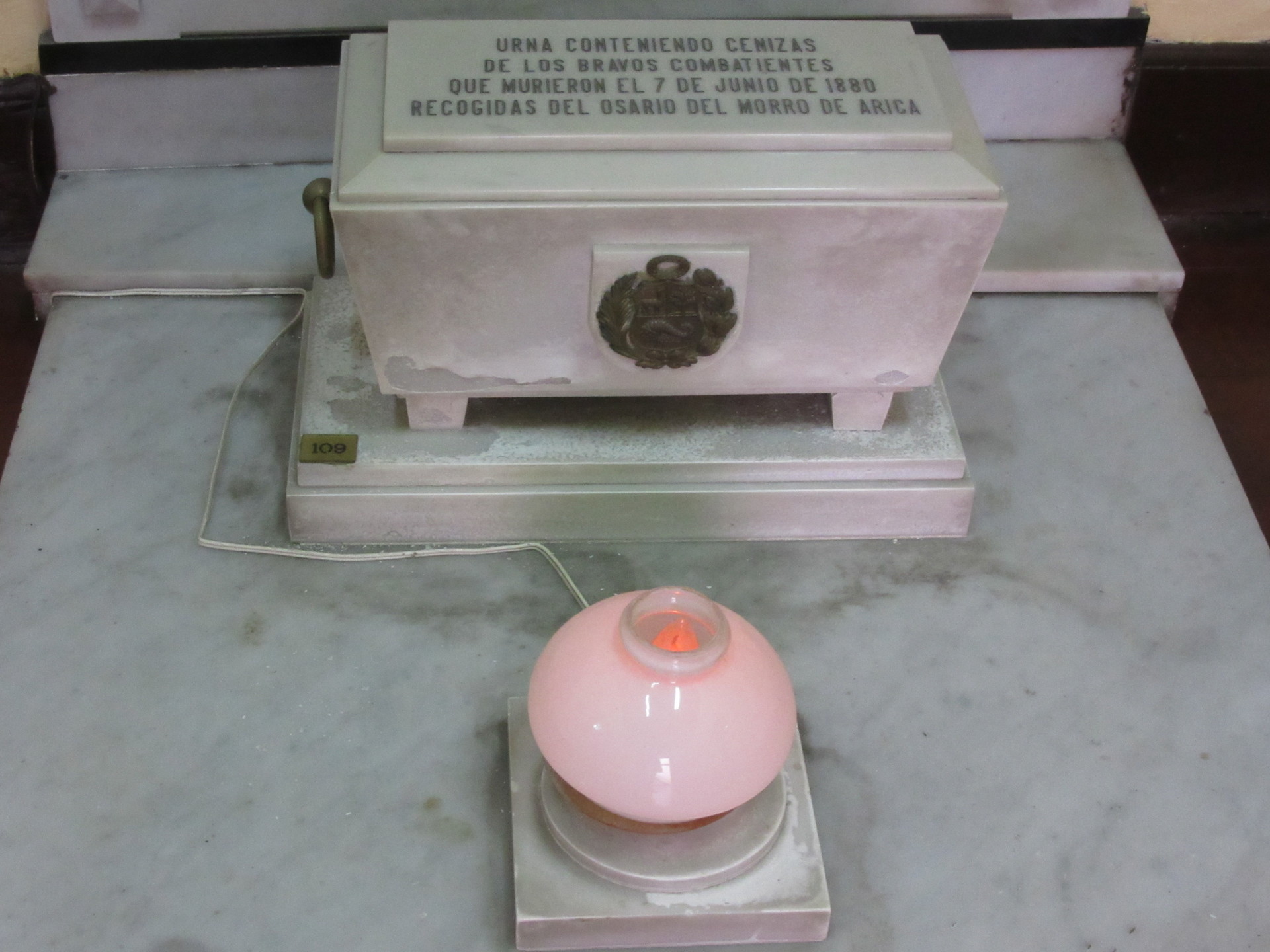
The history of the Pacific War has also brought characters who were able to survive this sad episode, for example inside the museum you can find a photograph in black and white with the survivors of the battle that they added the day that the monument of the hero of Arica was inaugurated.
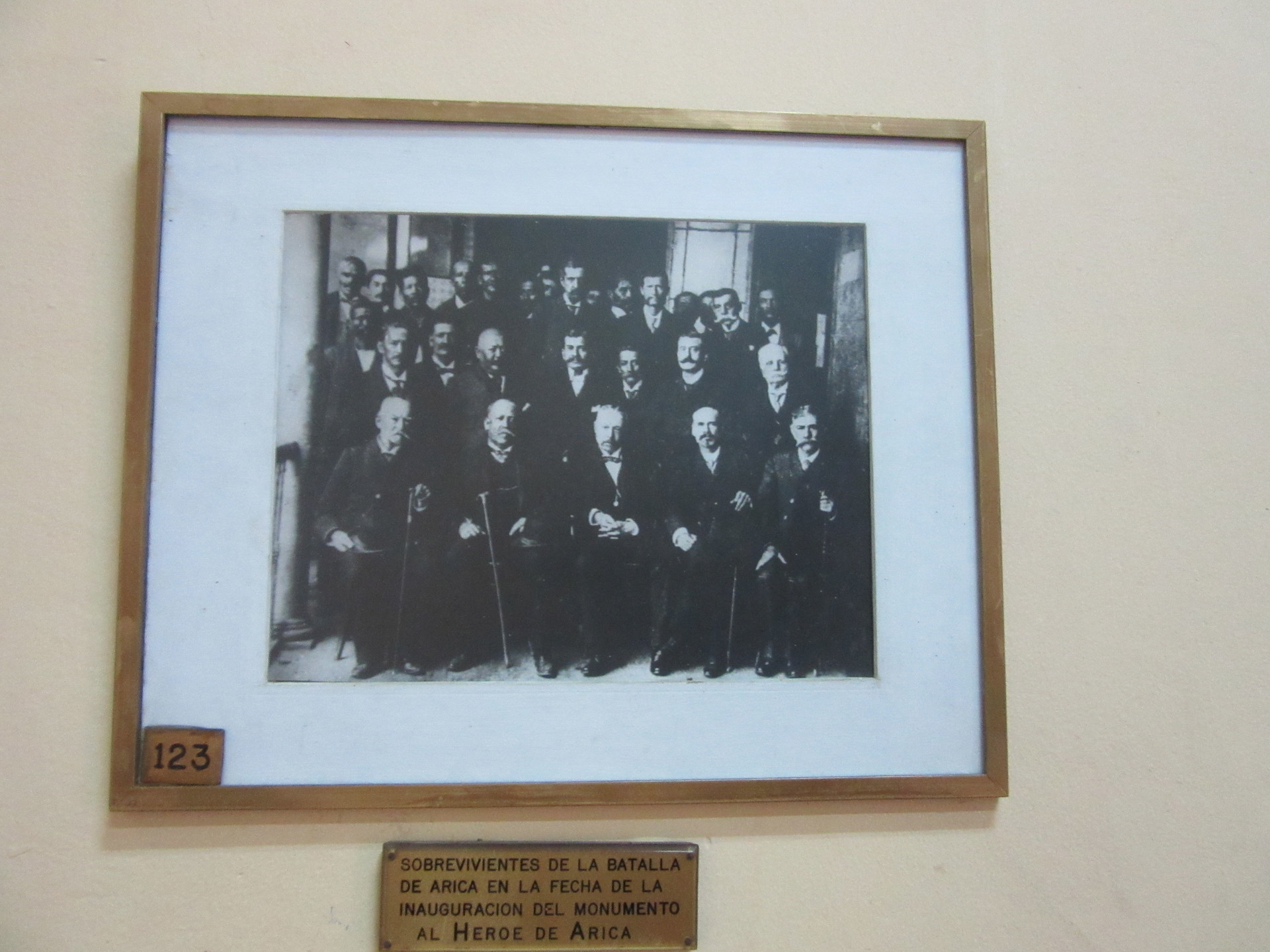
There is even another photograph with all of the survivors who were prisoners of this war but survived after the battle. There are approximately sixty people photographed in black and white, all of them already old-aged:
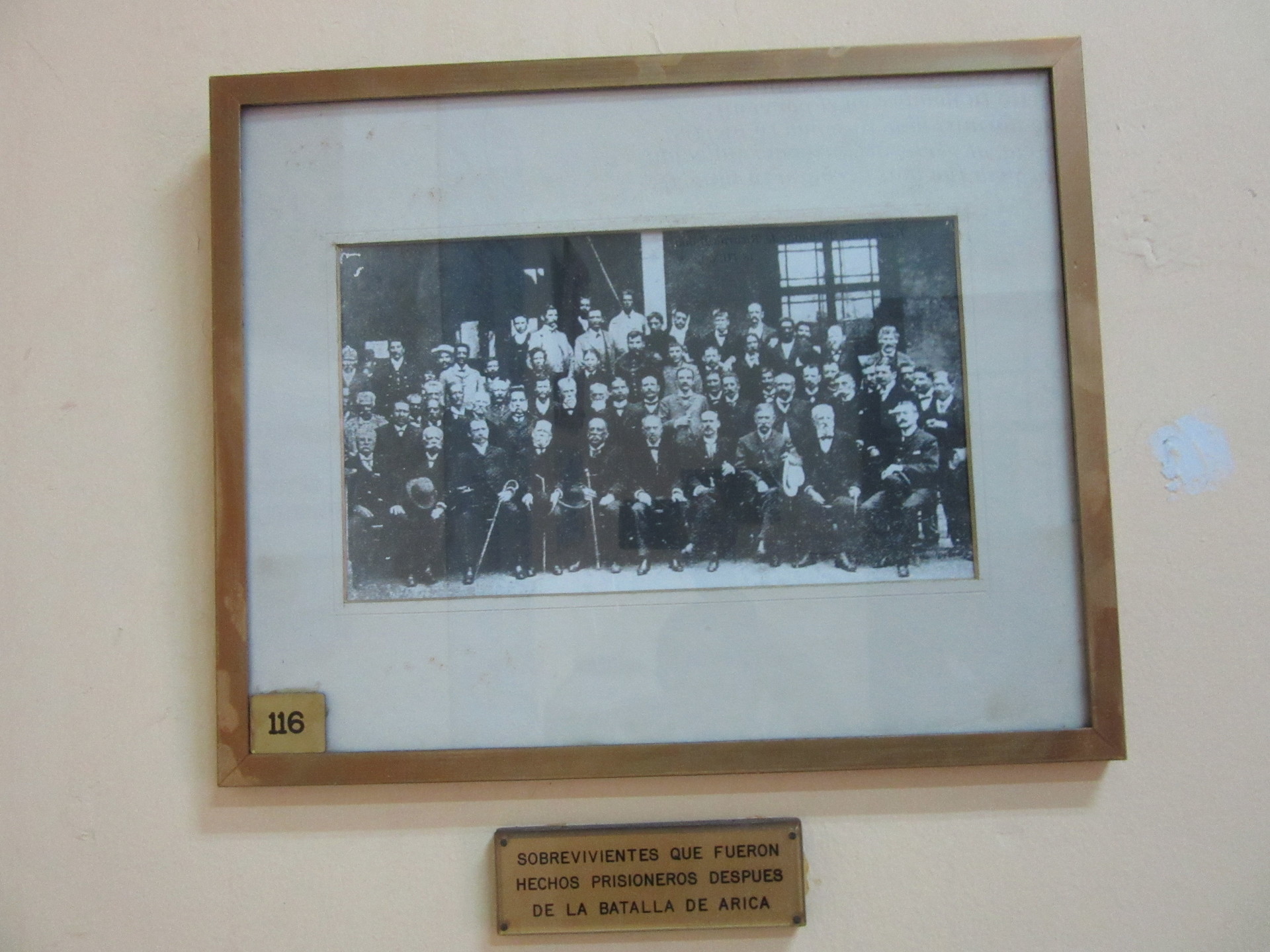
The phrase of the heroic Francisco Bolognesi
Moreover, I tell you dear friends that the phrase that catapulted Arica’s hero into history was the following: “You already know my response, I don’t know how to surrender, I always fight to win or die, say that this is my only and irreversible response, we will burn the last cartridge. ” This was the response that Francisco Bolognesi gave to the Chilean parliamentarian when the latter asked him to surrender. Inside the museum there is a plaque commemorating this, with the title “Epopeya del Morro” by the great writer José Santos Chocano.
Everything that you’ll find in this museum is linked to our heroes of this war, as well as a connection of all of the generals and officials injured in the defence of the Plaza de Arica in 1880.
Here I’d like to present you a little sculpture that respresents the act of Alfonso Ugarte when he is launching himself at the hill with his horse:
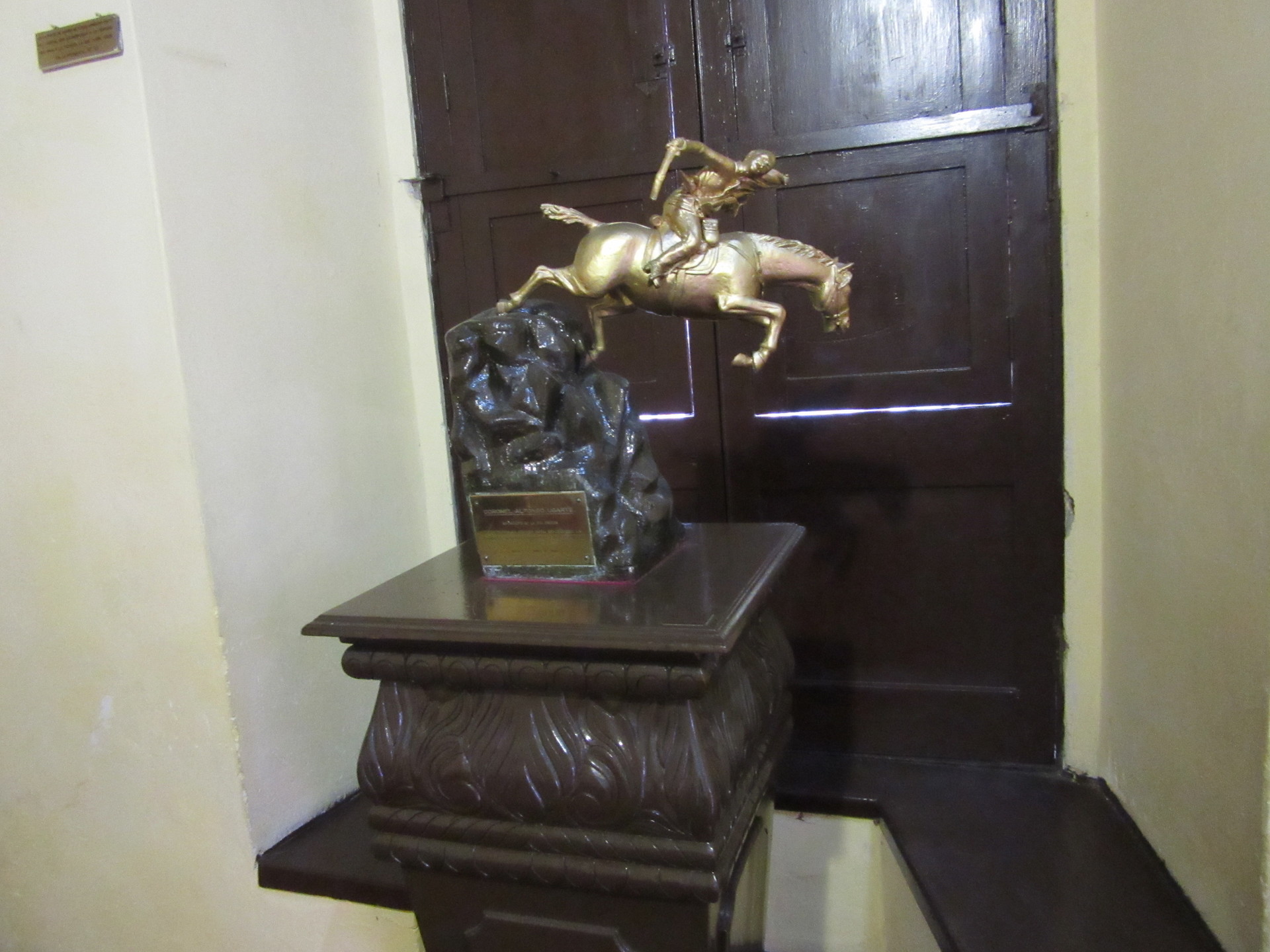
As well as this there is also a photograph of Alfonso Ugarte’s mother.
The name of Alfonso Ugarte’s mother was Rosa Vernal, and you can see her in one of the photos that is in the room dedicated to Alfonso Ugarte, taken in black and white at the time.
As we’ve seen up to now, all of these happened in Arica, currently Chilean territory, so undoubtedly then we’re going to find at least one photograph of the Morro de Arica where the terrible battle happened.
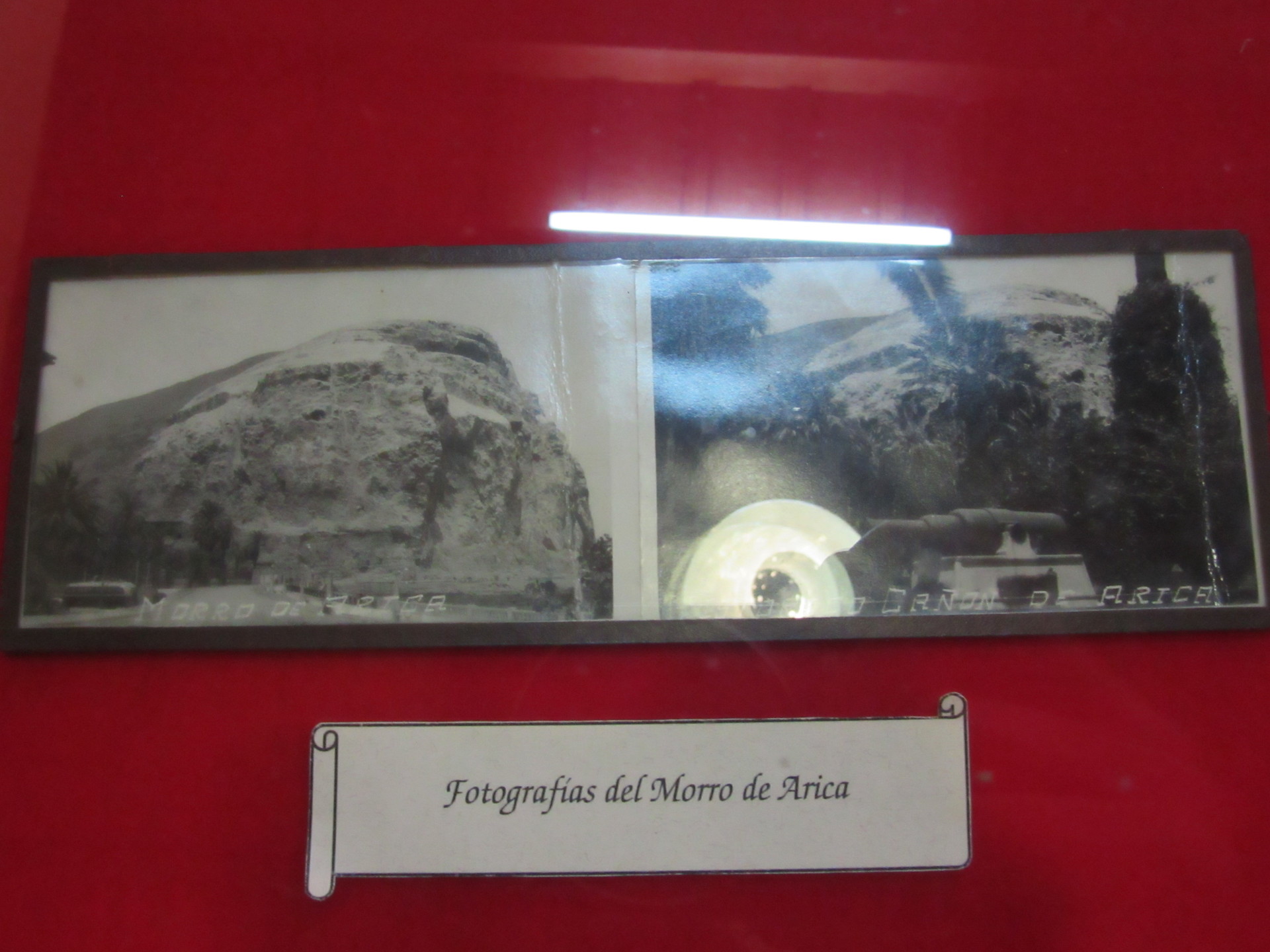
After covering the whole ground floor of this house I also found some beautiful wooden stairs that lead me to the next part of the museum that had so much information to offer to its visitors that you must come to see it!
Before going up the stairs I also noticed that there was a small cannon that was in the vestibule, which is also one of the relics that can be found in the museum.
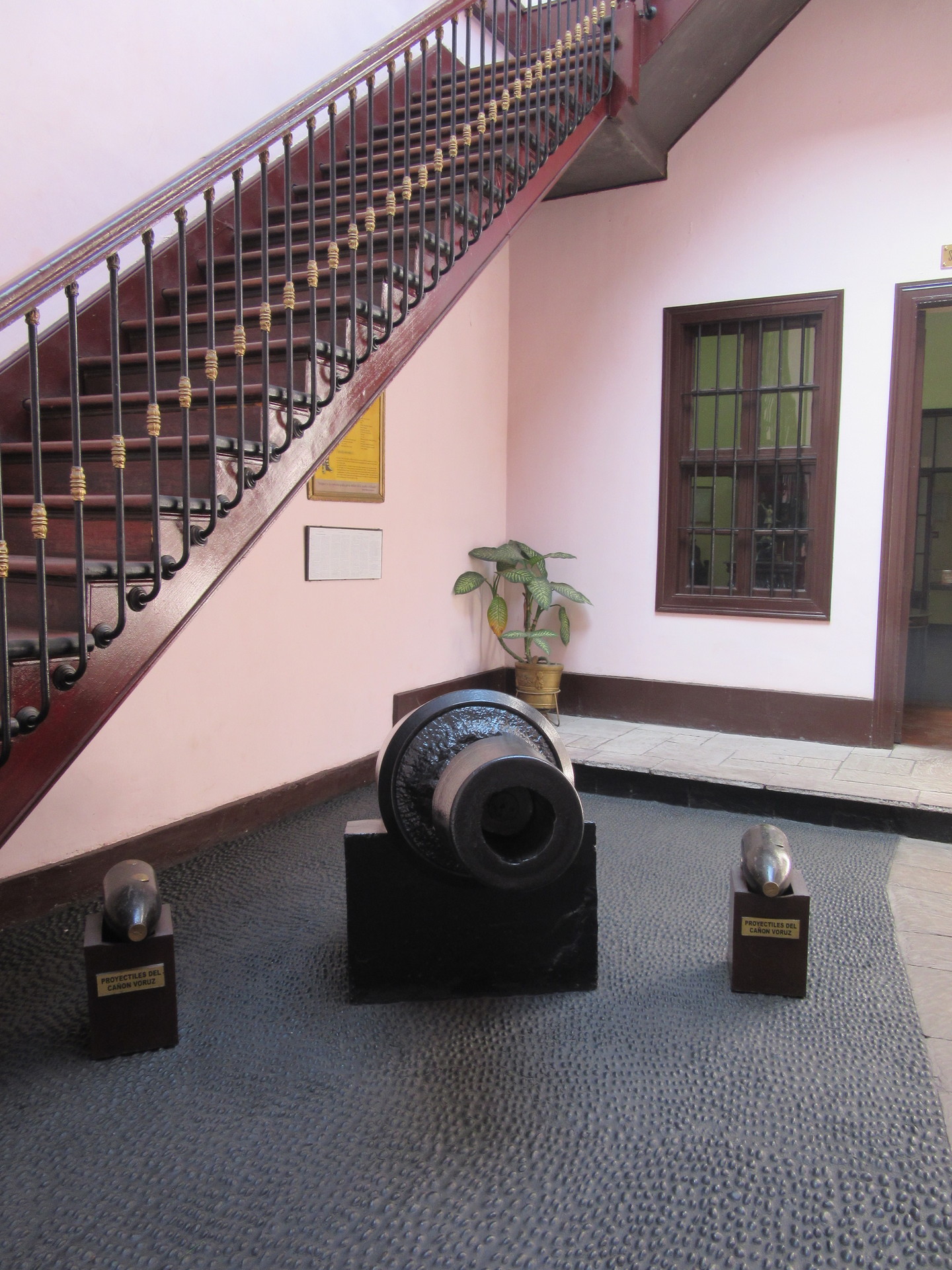
There was one of the canvases that most represents the museum, the one which made me remember my childhood since when I was studying at school I saw it in one of my History of Peru books. I’m sure that many of you (even non Peruvians) will also have seen it in a history book. It’s a picture with some scenes from the Battle of Arica where you see Colonel Francisco Bolognesi on the ground with a weapon in his hand, as if they were continuing to give their lives until the very last moment, continuing to fight the battle.

This painting is known as “the final cartridge” and shows a realist view of the battle. It was painted by the Peruvian painter J. Lepiani in 1899 (just 19 years after the Battle of Arica).
There’s also other relics in the museum, for example an old Peruvian flag that was used in these times to protect thee country.
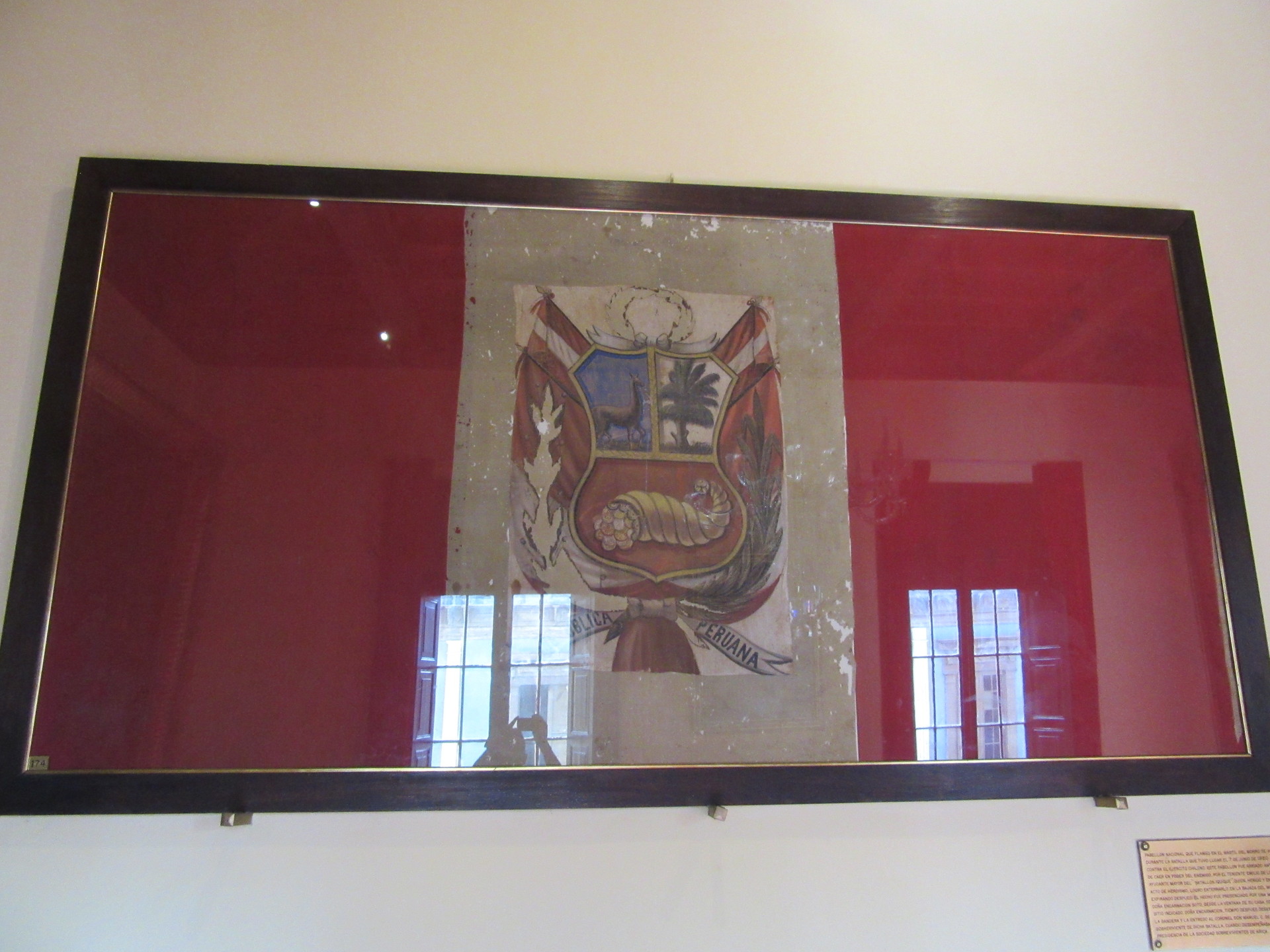
And the canvases continue to be the main attraction of this room, where we will also be able to appreciate a scene by Francisco Bolognesi when he meets the Chilean parliamentarian, which is where he said those famous words that are engraved in Peruvian history.
Things to be appreciated here are more canvases, arms, furniture and notes about the Battle of Arica.
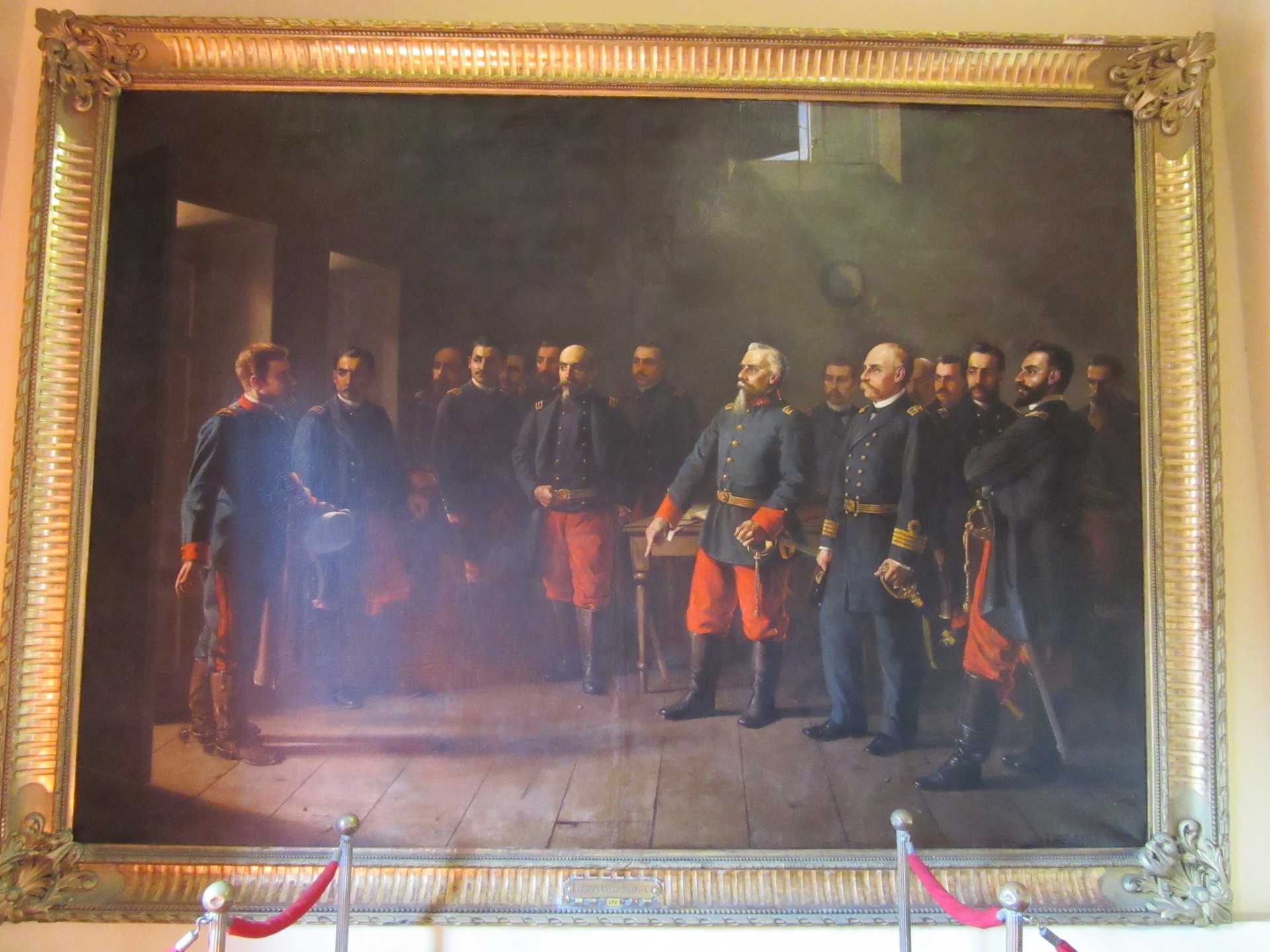
A miniature of the house
Moreover, there is also something picturesque, which is a miniature version of the museum house. This was my final visiting point within the museum’s facilities, afterwards it was time to go back downstairs and find the lady who had attended to me initially to thank her for everything that I had learned in this interesting museum, that we could equally say has an air of being a shrine for having the ashes of the combatants who died in the battle of Arica.

You will also find a golden statue of the face of the hero Francisco Bolognesi. This is in the museum entrance so if you don’t have time to go into the museum itself, what you can do is go into the museum hall and tell that guard that you want to take a picture with that statue. Truthfully, he won’t say no, because when I was there a group of boys arrived and asked the same thing of the guard and he agreed without a problem. So now you know!
This is the sculpture that I’m talking about:
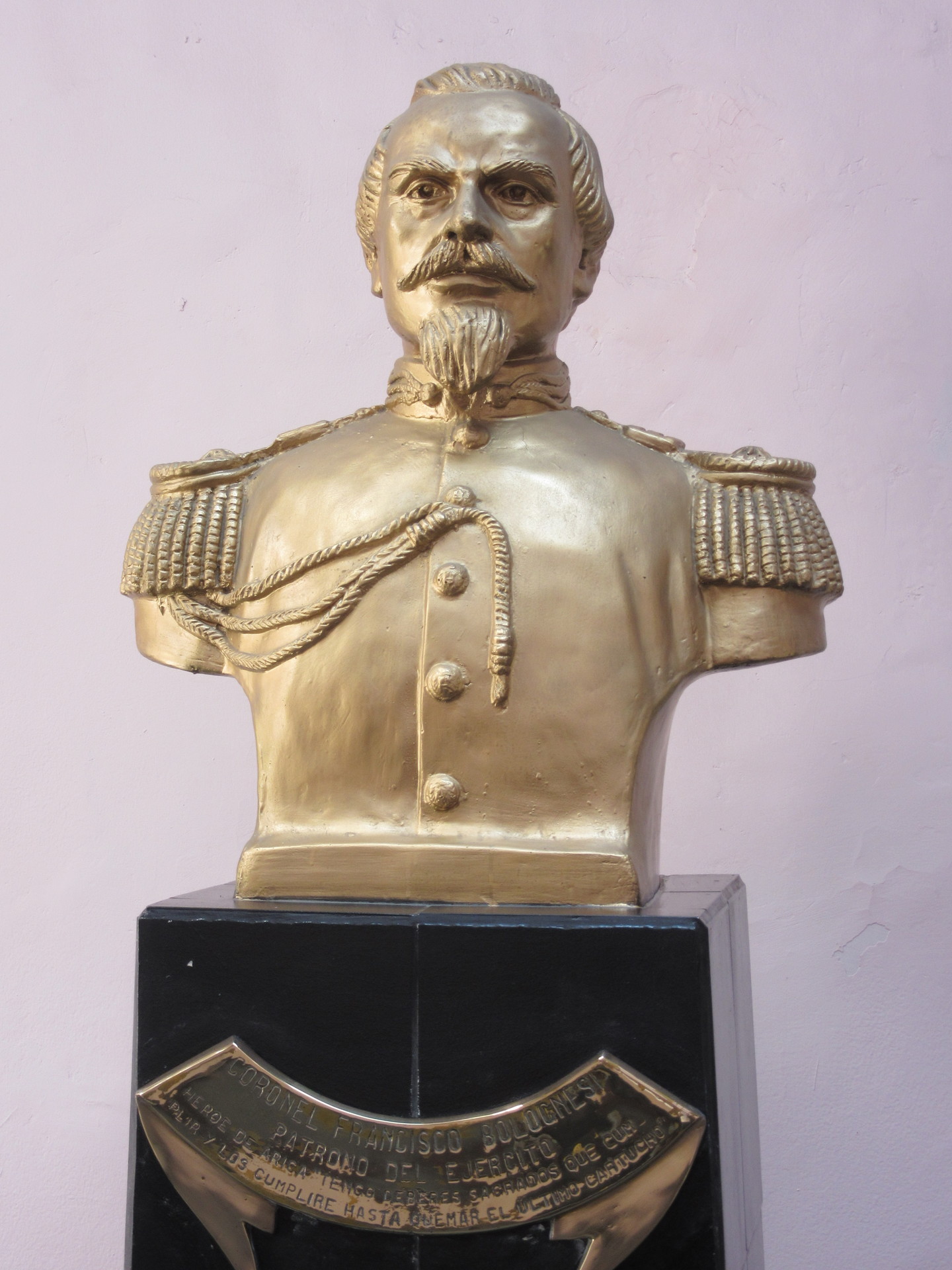
Conclusion of this incredible visit
The museum is without a doubt one of the main expositions of the history of Peru, enabling us to understand all of the work that made the great defenders of our country protect its ideals at the cost of their own lives. It is for all of these reasons that I highly recommend coming to the museum in order to see the bravery of each of these people, as well as to learn a lot about the history of Peru and the most important events of the Pacific War linked to Arica’s combat.
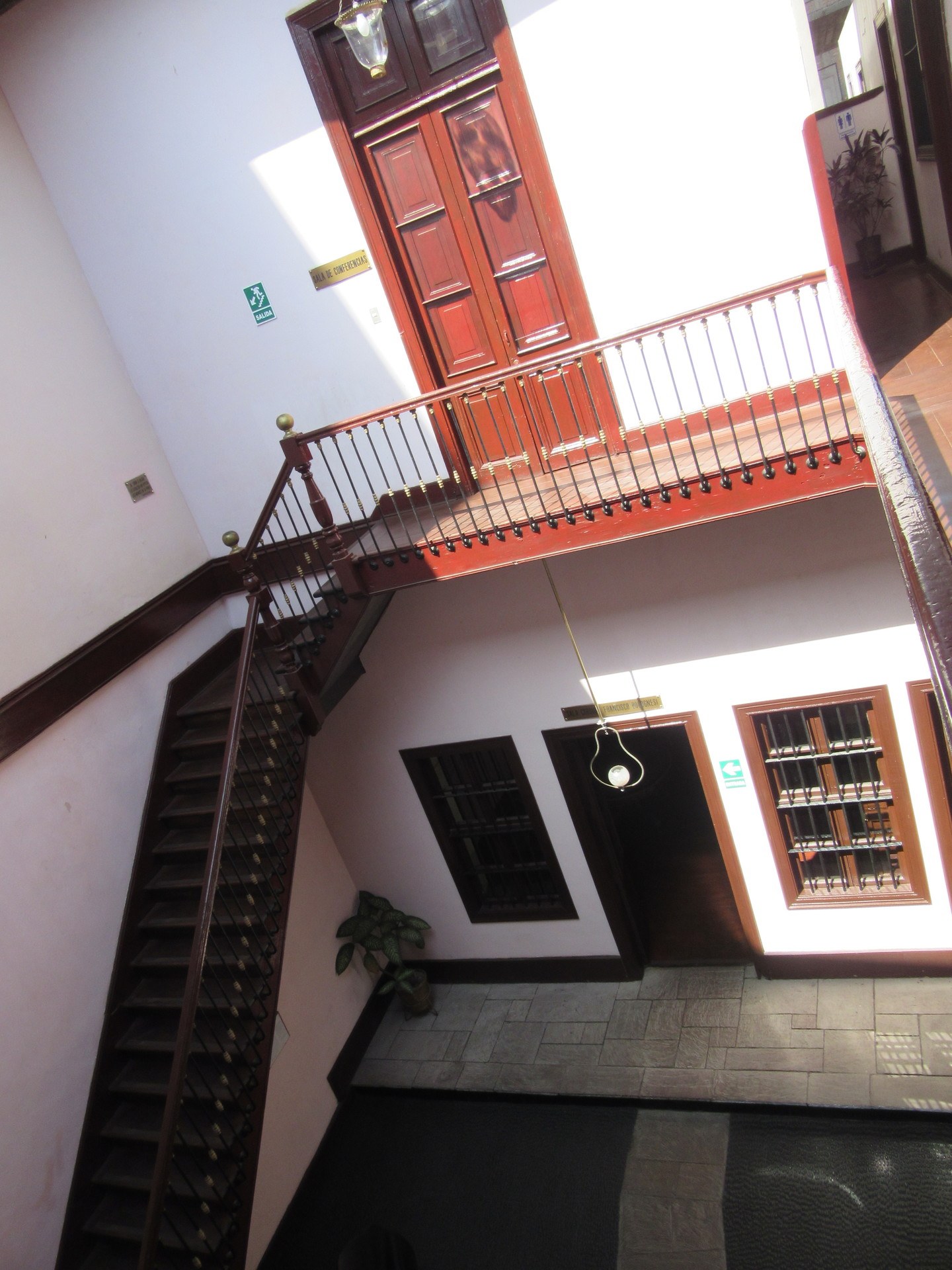
Here, by way of contradiction, lie the remains of each one of these incognito characters from our history, from whom we can learn many new things in order to be able to have a better view of the country and to improve the situation for our future generations.
Coming to the museum and covering each of its rooms isn’t going to take you much time, I think that you can see it all in less than an hour and a half. The entry price doesn’t include a guide but all of the little descriptions that are in the rooms are sufficient in order to help you realise the importance and the bravery of our national heroes of Peru.
Finally, I just want to emphasize that this type of museum is not for evoking lower passions nor any type of chauvinism between us as Peruvians against our Chilean brothers. What we should do is learn from our history and make sure that these things don’t happen again. History is for us to see and understand.
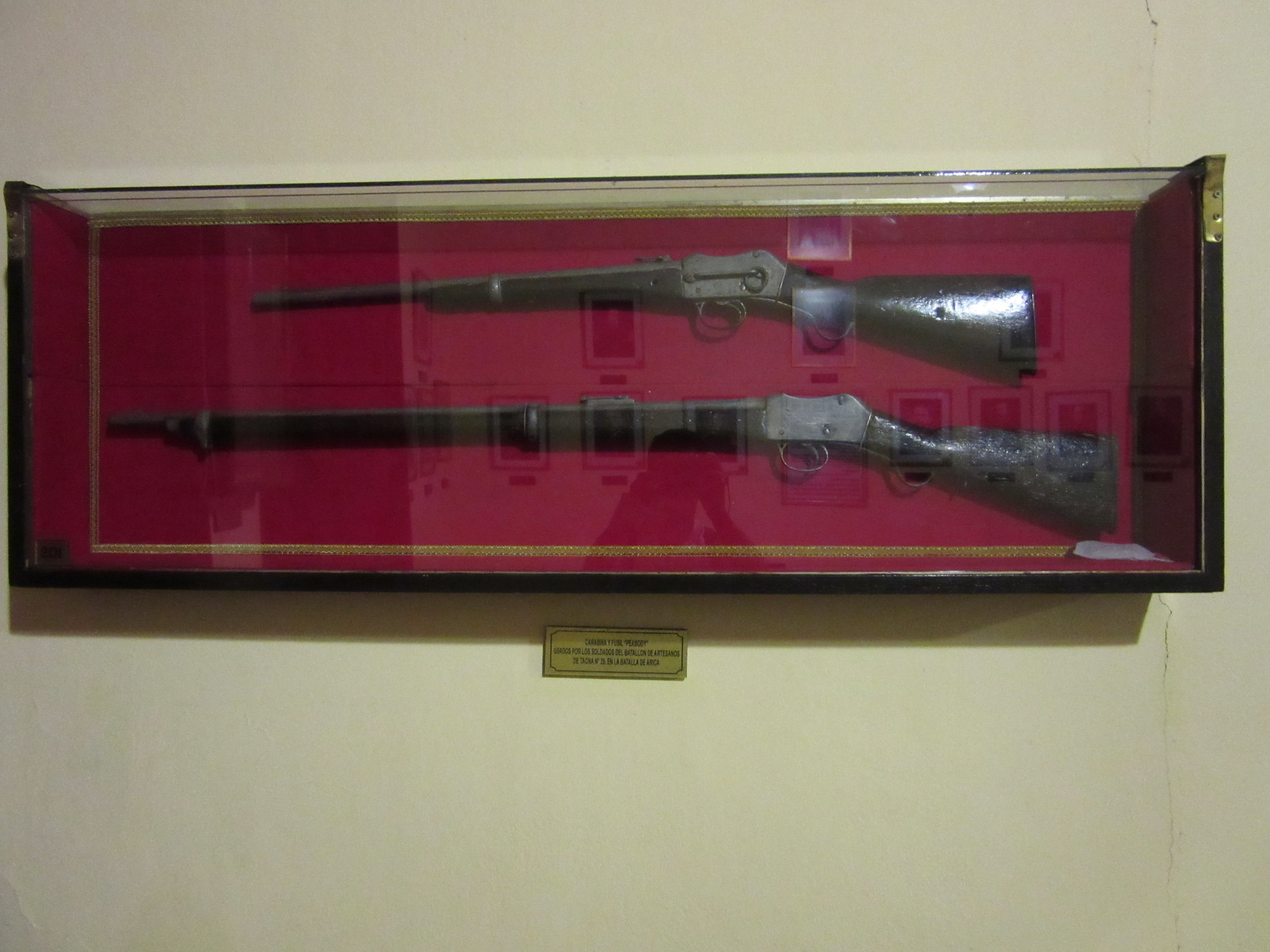
How do you get to the museum?
It doesn’t take much time to orientate yourself and to find this museum. I recommend coming by metro or if not taking the blue bus that goes down the Avenida Tacna. If you decide to come by metro you need to get off at “Jirón de la Unión” using the C line or the A line. Another option for the more adventurous is to come by bike. I know you’ll think I’m crazy suggesting this but when I came to the museum I came by bike and left it parked in the plaza San Agustín which is very close by.
Finally I recommend visiting other interesting parts of the centre of Lima. If you arrive right at midday, you can discover and enjoy the changing of the guards that happens in Peru’s Governmental Palace.
The truth is that there are many options to be able to have a marvellous time on your visit to the centre of Lima, so I hope you come to check it out!
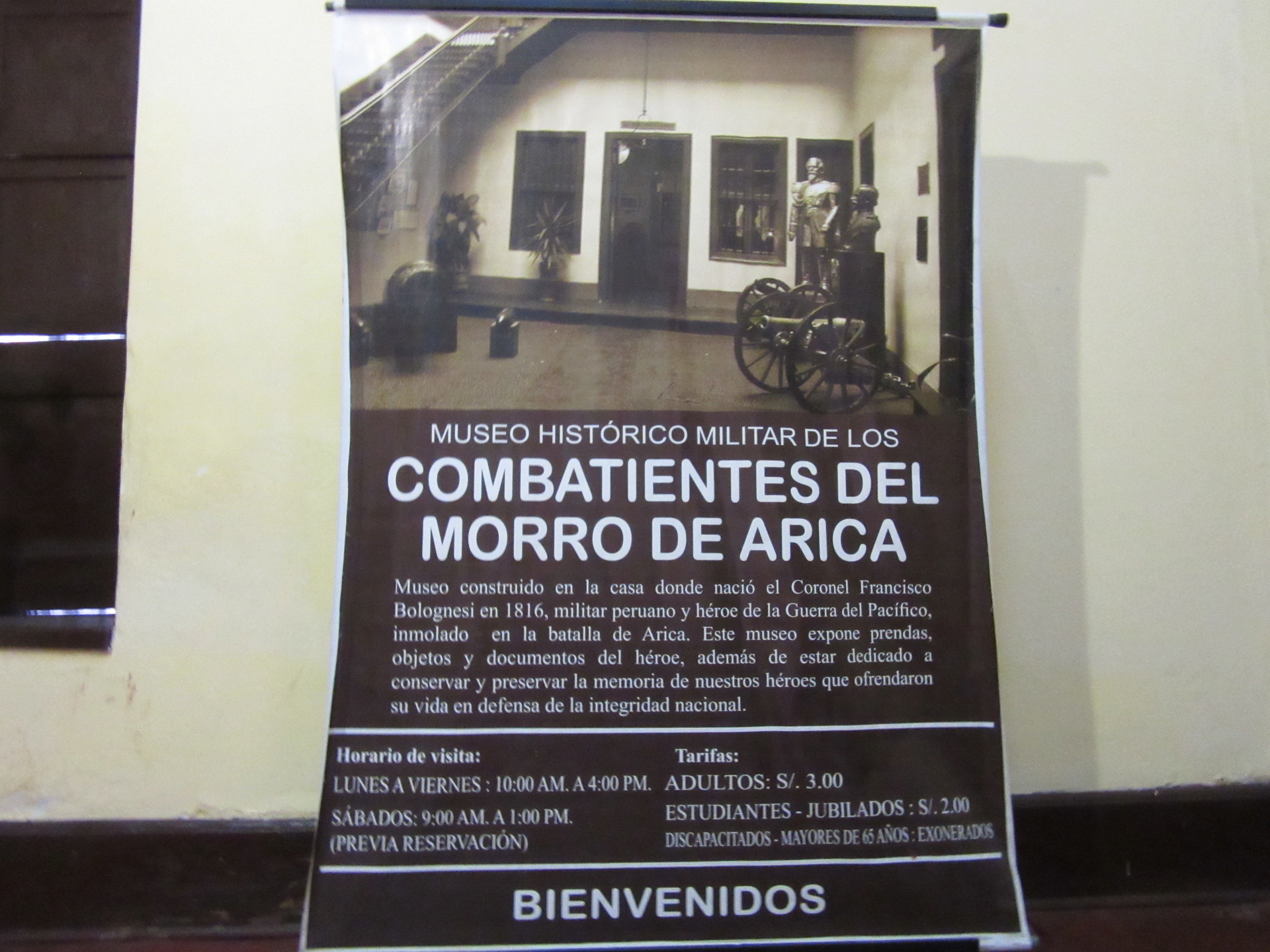
I hope this information has been useful to you and thank you very much for reading these articles! Don’t forget to keep discovering all of the monuments that can be found in Lima, because it’s a city with thousands of things for each one of you.
So until next time from me! We’ll see each other for more adventures! Lovers of Lima!
Have a happy Sunday.
Photo gallery
Content available in other languages
Want to have your own Erasmus blog?
If you are experiencing living abroad, you're an avid traveller or want to promote the city where you live... create your own blog and share your adventures!
I want to create my Erasmus blog! →
























































Comments (0 comments)